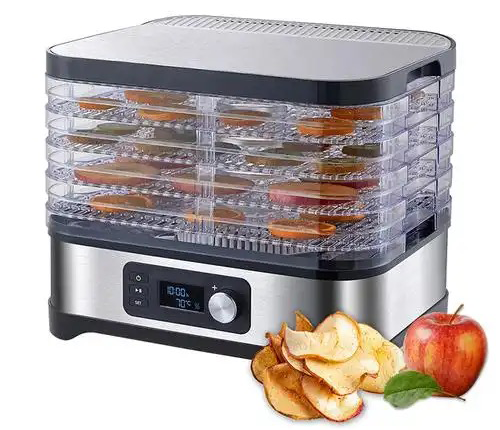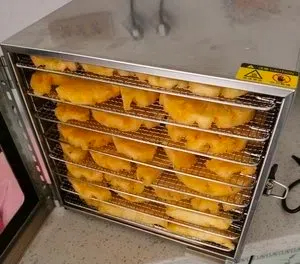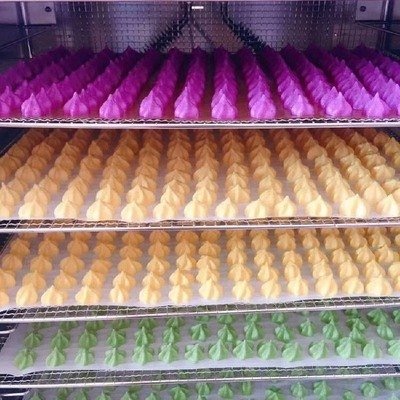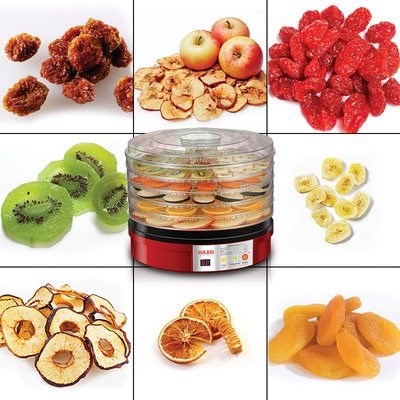
Content Menu
● What is a Heat Pump Dryer?
● Drainage Options for Heat Pump Dryers
● Do You Need a Drain Connection?
● Benefits of Using Heat Pump Dryers for Food Drying
● How Does a Heat Pump Dryer Work?
● Installation Considerations
● Maintenance Tips for Heat Pump Dryers
● Advantages Over Traditional Dryers
● Conclusion
● FAQ
>> 1. What types of foods can be dried using a heat pump dryer?
>> 2. How long does it take to dry food in a heat pump dryer?
>> 3. Is it safe to dry meat in a heat pump dryer?
>> 4. Can I use my existing kitchen drain for my heat pump dryer?
>> 5. How often do I need to clean my heat pump dryer?
Heat pump dryers have gained popularity due to their energy efficiency and versatility. Unlike traditional dryers, they do not require an exhaust vent, making them suitable for various spaces, including apartments. However, a common question arises: Does a heat pump dryer require a drain connection? This article will explore this topic in detail, focusing on the mechanics of heat pump dryers, their drainage options, and the benefits of using these appliances for food drying.

What is a Heat Pump Dryer?
A heat pump dryer is an advanced type of clothes dryer that utilizes a heat pump to recycle air within the drum. This process involves:
- Heating Air: The heat pump heats the air using a refrigerant system.
- Circulating Warm Air: The warm air is circulated through the drum where it absorbs moisture from the clothes.
- Condensing Moisture: The moist air is then passed over evaporator coils, where it cools down, causing the moisture to condense into water.
- Water Collection: This water can either be collected in a tank or drained away.
The key advantage of heat pump dryers is their energy efficiency. They consume significantly less electricity than conventional dryers—up to 50% less—making them an eco-friendly choice for drying clothes and food products alike.
Drainage Options for Heat Pump Dryers
When it comes to drainage, heat pump dryers can be categorized into two types:
- Drained Heat Pump Dryers: These models require a direct connection to a drain. The moisture extracted from the clothes is continuously removed through a hose connected to your plumbing system. This option eliminates the need to manually empty a water tank after each use.
- Drainless Heat Pump Dryers: These units come with an internal water reservoir that collects moisture. Users must manually empty this tank when it becomes full. While this option offers more flexibility in terms of installation, it requires regular maintenance to ensure optimal performance.
Do You Need a Drain Connection?
In general, whether you need a drain connection depends on the type of heat pump dryer you choose:
- If you opt for a drained model, you will need access to a plumbing system for proper installation. This setup provides convenience as it allows continuous drainage without manual intervention.
- For drainless models, no drain connection is necessary. However, you must ensure that you are prepared to regularly empty the water tank to avoid overflow.

Benefits of Using Heat Pump Dryers for Food Drying
Heat pump dryers are not just limited to drying clothes; they are also effective for food drying. Here are some benefits of using these appliances for food products:
- Energy Efficiency: They consume less power compared to traditional food dehydrators or ovens, making them cost-effective in the long run.
- Preservation of Nutrients: The lower drying temperatures used in heat pump dryers help retain more nutrients in food compared to conventional methods.
- Versatile Use: They can dry various foods including fruits, vegetables, herbs, and meats without requiring extensive space or ventilation.
How Does a Heat Pump Dryer Work?
To understand how heat pump dryers function, consider the following steps:
1. Air Intake: Air enters the dryer through an intake vent.
2. Heating Process: The air is heated by passing over condenser coils filled with refrigerant.
3. Moisture Absorption: As the warm air circulates through the drum, it absorbs moisture from the wet clothes or food items.
4. Cooling Phase: The moist air exits the drum and passes over evaporator coils where it cools down, causing moisture to condense into water droplets.
5. Water Collection/Drainage: The condensed water is either collected in a tank or directed through a drainage hose.
Installation Considerations
When installing a heat pump dryer, consider the following:
- Space Availability: Ensure that there is enough space for either type of dryer and that your laundry area can accommodate any necessary plumbing modifications if opting for a drained model.
- Plumbing Access: If you choose a drained model, check that there is access to existing plumbing lines or consider hiring professionals for installation.
- Electrical Requirements: Heat pump dryers typically require a standard electrical outlet; however, some models may need dedicated circuits due to their power consumption. Always consult your appliance manual and local codes before installation.
Maintenance Tips for Heat Pump Dryers
To ensure optimal performance and longevity of your heat pump dryer, regular maintenance is essential. Here are some tips:
- Clean Filters Regularly: Lint filters should be cleaned after every use to maintain airflow and efficiency. Clogged filters can lead to longer drying times and increased energy consumption.
- Check Condenser Coils: Inspect condenser coils every few months for dust accumulation. Clean them gently with a soft brush or vacuum attachment to enhance efficiency.
- Empty Water Tank (if applicable): For drainless models that collect moisture in a tank, make sure to empty it regularly. Some models have indicators that alert you when the tank is full.
- Inspect Hoses and Connections: For drained models, periodically check hoses for leaks or blockages that could hinder drainage performance.
Advantages Over Traditional Dryers
Heat pump dryers present several advantages over traditional vented dryers:
| Feature | Heat Pump Dryer | Traditional Dryer |
| Energy Consumption | Up to 50% less | Higher energy usage |
| Ventilation Requirement | No external vent needed | Requires external vent |
| Installation Flexibility | Can be installed anywhere | Limited by venting needs |
| Moisture Control | Efficient condensation | Moisture released outside |
| Temperature Control | Lower drying temperatures | Higher temperatures |
Conclusion
In conclusion, whether a heat pump dryer requires a drain connection depends on its design—drained models necessitate plumbing connections while drainless models do not. Both types offer unique advantages tailored to different user needs and preferences.
For those interested in energy-efficient solutions for drying both clothes and food products, heat pump dryers present an excellent choice due to their versatility and reduced operational costs. With proper installation and maintenance, these appliances can serve as reliable tools in both domestic and commercial settings.

FAQ
1. What types of foods can be dried using a heat pump dryer?
You can dry various foods such as fruits (apples, bananas), vegetables (carrots, tomatoes), herbs (basil, oregano), and meats (jerky) using a heat pump dryer.
2. How long does it take to dry food in a heat pump dryer?
Drying times can vary based on the type of food and its moisture content but generally range from 6 to 12 hours.
3. Is it safe to dry meat in a heat pump dryer?
Yes, it is safe as long as you follow proper guidelines for temperature settings and ensure that meat reaches safe internal temperatures during drying.
4. Can I use my existing kitchen drain for my heat pump dryer?
If you have chosen a drained model, you can connect it to your existing kitchen drain provided there is adequate access and compatibility with your plumbing system.
5. How often do I need to clean my heat pump dryer?
Regular maintenance includes cleaning lint filters after every use and checking condenser coils every few months to ensure efficient operation.












